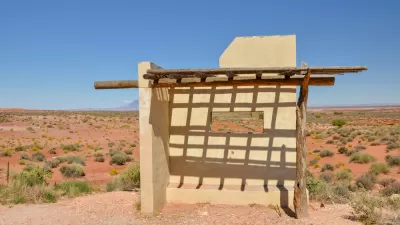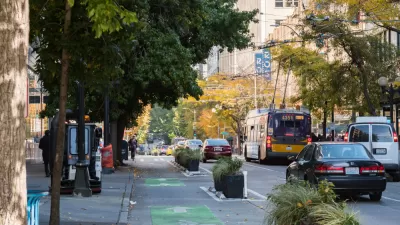Advocates for tribal communities argue that the bipartisan infrastructure bill does not direct enough money to tribal transportation needs, but USDOT and local leaders can ensure more equitable distribution of funds to projects on tribal lands.

A blog post from Tala Parker, a summer fellow at the Natural Resources Defense Council (NRDC), examines the funding available for tribal transportation projects in last year’s infrastructure law, the potential for improvements, and the shortfalls of the bill in addressing the high rates of traffic violence on tribal lands.
“While the overall budget doubled, funding for Tribal transportation only increased by about 50 percent (from $2.4 billion in the FAST Act to $3.8 billion in the infrastructure law).” Parker explains that this increase is clearly inequitable, in part because Native people die at disproportionately high rates on roadways, and because the funding is not even proportionate to the Native population.
It is still possible to close the gap between the infrastructure law’s inadequate Tribal funding allocation and an equitable spending strategy, if the federal government and states succeed in allocating an additional $9-10 billion to address needs identified by Indigenous communities.
Parker outlines the oversight and long-term capacity building necessary to successfully implement this approach. Because the federal government did not direct enough funds to tribal roads and transportation in the bill, Parker writes, it’s up to state governments, tribal leaders, and the Department of Transportation to ensure an equitable distribution of resources that will improve safety and transportation options in tribal communities.
FULL STORY: Infrastructure law short on tribal transportation spending

Planetizen Federal Action Tracker
A weekly monitor of how Trump’s orders and actions are impacting planners and planning in America.

San Francisco's School District Spent $105M To Build Affordable Housing for Teachers — And That's Just the Beginning
SFUSD joins a growing list of school districts using their land holdings to address housing affordability challenges faced by their own employees.

The Tiny, Adorable $7,000 Car Turning Japan Onto EVs
The single seat Mibot charges from a regular plug as quickly as an iPad, and is about half the price of an average EV.

Seattle's Plan for Adopting Driverless Cars
Equity, safety, accessibility and affordability are front of mind as the city prepares for robotaxis and other autonomous vehicles.

As Trump Phases Out FEMA, Is It Time to Flee the Floodplains?
With less federal funding available for disaster relief efforts, the need to relocate at-risk communities is more urgent than ever.

With Protected Lanes, 460% More People Commute by Bike
For those needing more ammo, more data proving what we already knew is here.
Urban Design for Planners 1: Software Tools
This six-course series explores essential urban design concepts using open source software and equips planners with the tools they need to participate fully in the urban design process.
Planning for Universal Design
Learn the tools for implementing Universal Design in planning regulations.
Smith Gee Studio
City of Charlotte
City of Camden Redevelopment Agency
City of Astoria
Transportation Research & Education Center (TREC) at Portland State University
US High Speed Rail Association
City of Camden Redevelopment Agency
Municipality of Princeton (NJ)





























